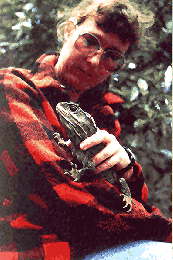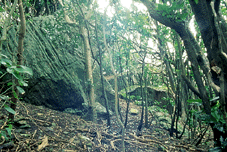Press any of the buttons below to go to my other pages.
You are currently on a

page.

Press any of the buttons below to go to my other pages.
You are currently on a

page.

You are visitor number since 20 September 1998.
For more on my PhD look at my homepage. I've been working on my pedigree you can find parts of it on the following pages; the Smouter pages and the Dijkgraaf and others
If you are travelling through on the Holland link you can find the exit at the bottom of the page.
 Sign my Guestbook,
View my Guestbook
Sign my Guestbook,
View my Guestbook
Page last updated on 27 October 1998
 On these pages I would like to share some of those special memories, those wonderful things that have happen to me. These are the things that make my life fun and worth living and I hope that you will enjoy them just as much as I do. The topics are listed below, just click on what interests you.
On these pages I would like to share some of those special memories, those wonderful things that have happen to me. These are the things that make my life fun and worth living and I hope that you will enjoy them just as much as I do. The topics are listed below, just click on what interests you.

Tuataras and deserted islands | ||
|---|---|---|
| I've been told that these pictures are liable to get my hands cut off. There are many zoologists who would pay dearly to touch the hands that held tuatara. Tuataras are large "lizards" that have survived essentially unchanged in appearance from the age of the dinosaurs.
|  A close-up of a very special creature. No, not the human being. | They are only found in New Zealand, and are rare even there. Rats, cats, and mustelids (stoats, weasels and ferrets) have destroyed the mainland populations, and tuataras can now only be found on some of the offshore islands.
|
| That was one of the reasons that meeting these tuataras was so special. Ever wanted to be stranded on a deserted island in the middle of the ocean? Well, I more or less was. The tuatara population that I helped to research lives on Whatupuke Island in the Hen and Chickens Group (off the coast of Whangarei). | ||
| These islands are all nature reserves and you need special permission to land there. I spend a week in glorious isolation (well, other than the person I was working for) and down to earth primitive conditions. During the day we monitored insect populations and at night we hunted tuatara with head-torches. In between I explored the island and found all sorts of wonderful plants and animals. Close-up interviews with saddlebacks (a wattled bird species) and discovering the native cucumber (Sicyos angulata) were just some of the highlights.
|  Typical forest on Whatupuke Island, in the petrel/tuatara burrow area. |
| We were there in the middle of winter and the weather was quite stormy at times. Wind gusts rattled the leaves of the large leaved puka (Mertya sinclairii) making them sound like a train rattling over the tracks. I lay there in my sleeping bag hearing the train start in the distance, and expecting to be run over any minute. It was wonderful :-) | |
The New Zealand Geographic is a wonderful, glossy paged, magazine exploring the life and wonders of New Zealand. Many of my favourite happenings have appeared as articles in the NZ Geo, check the list below for more information on your favourite topic.
|
Bats; New Zealand Geographic #25 Bumblebee; New Zealand Geographic #24 Cabbage trees; New Zealand Geographic #14 Dolphins; New Zealand Geographic #14 Huia; New Zealand Geographic #20 Humpback Whales; New Zealand Geographic #30 Kaka; New Zealand Geographic #34 Kea; New Zealand Geographic #24 Moa; New Zealand Geographic #12 | Porcelain dolls; New Zealand Geographic #12 Possum; New Zealand Geographic #13 Pukeko; New Zealand Geographic #21 Puriri; New Zealand Geographic #13 Sea lions; New Zealand Geographic #33 Seuffert & son; New Zealand Geographic #6 Tuatara; New Zealand Geographic #6 Weta; New Zealand Geographic #21 Wood rose; New Zealand Geographic #6 |

|
This Site Is In The Holland Ring
[Skip Prev]
[Prev]
[Next]
[Skip Next] |

 Deze Nederlandse
ICQ-Ring wordt beheerd door
Deze Nederlandse
ICQ-Ring wordt beheerd door
Astrid Dijkgraaf. UIN#12227522. Wil je ook opgenomen worden in de Nederlandse ICQ-Ring? |
|---|
| [Vorige overslaan] [Vorige] [Volgende] [Volgende overslaan] [Willekeurig] [Volgende 5] [Lijst] |